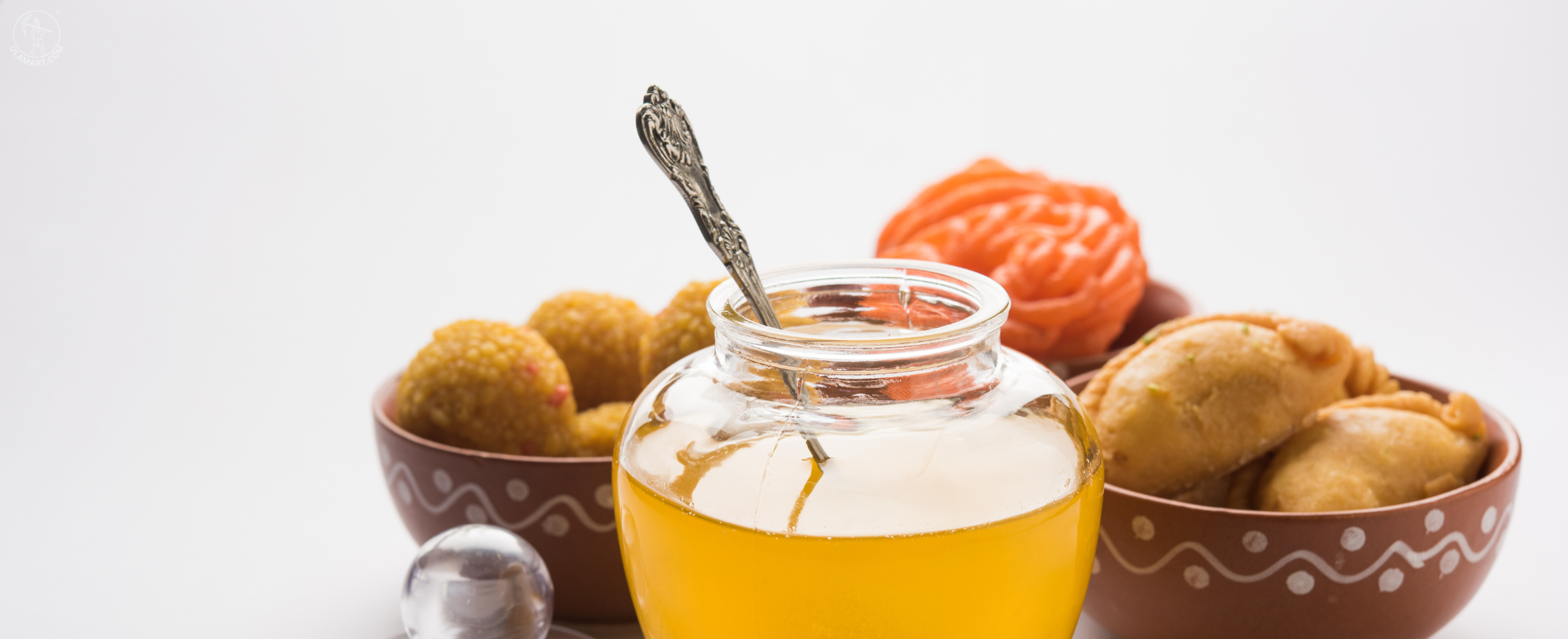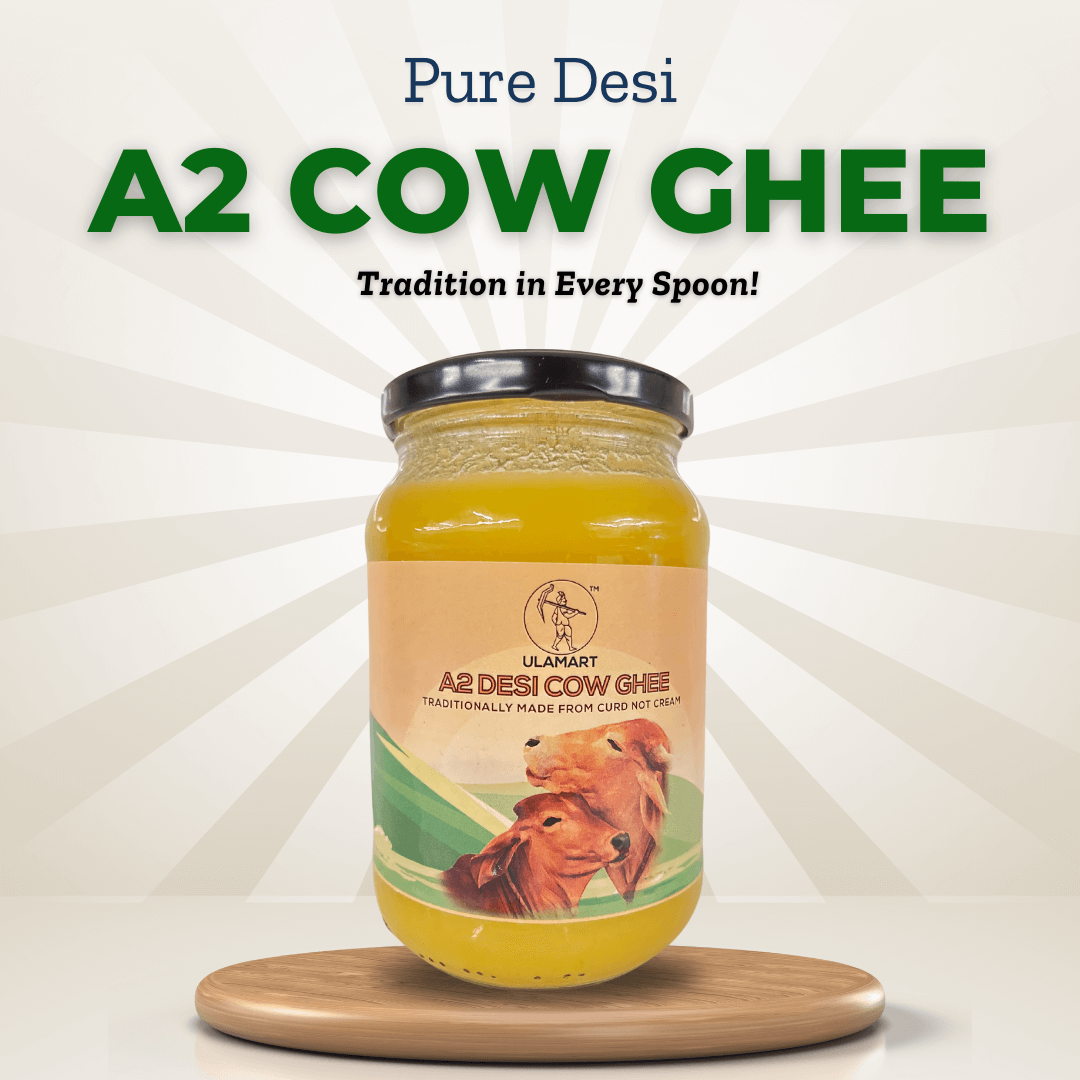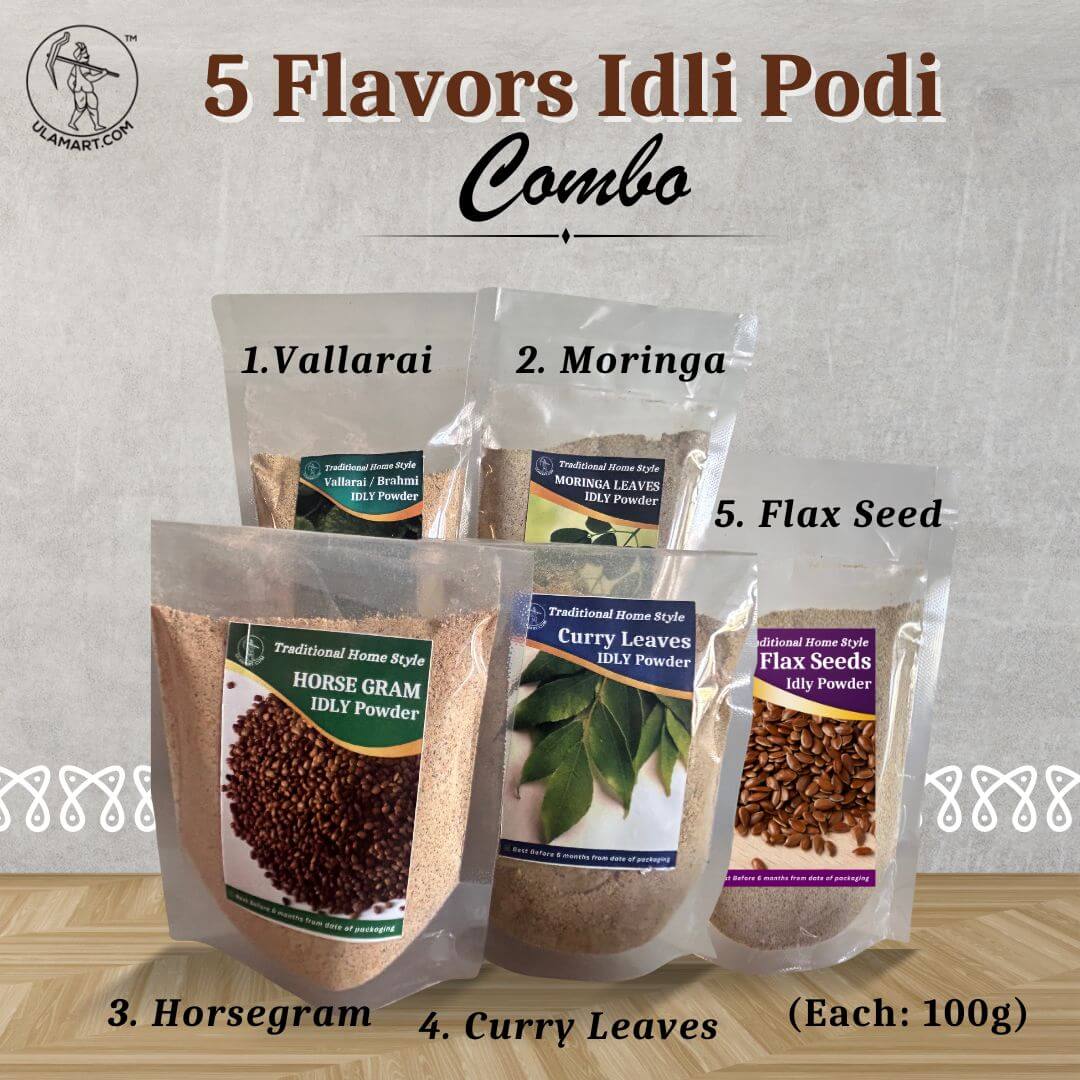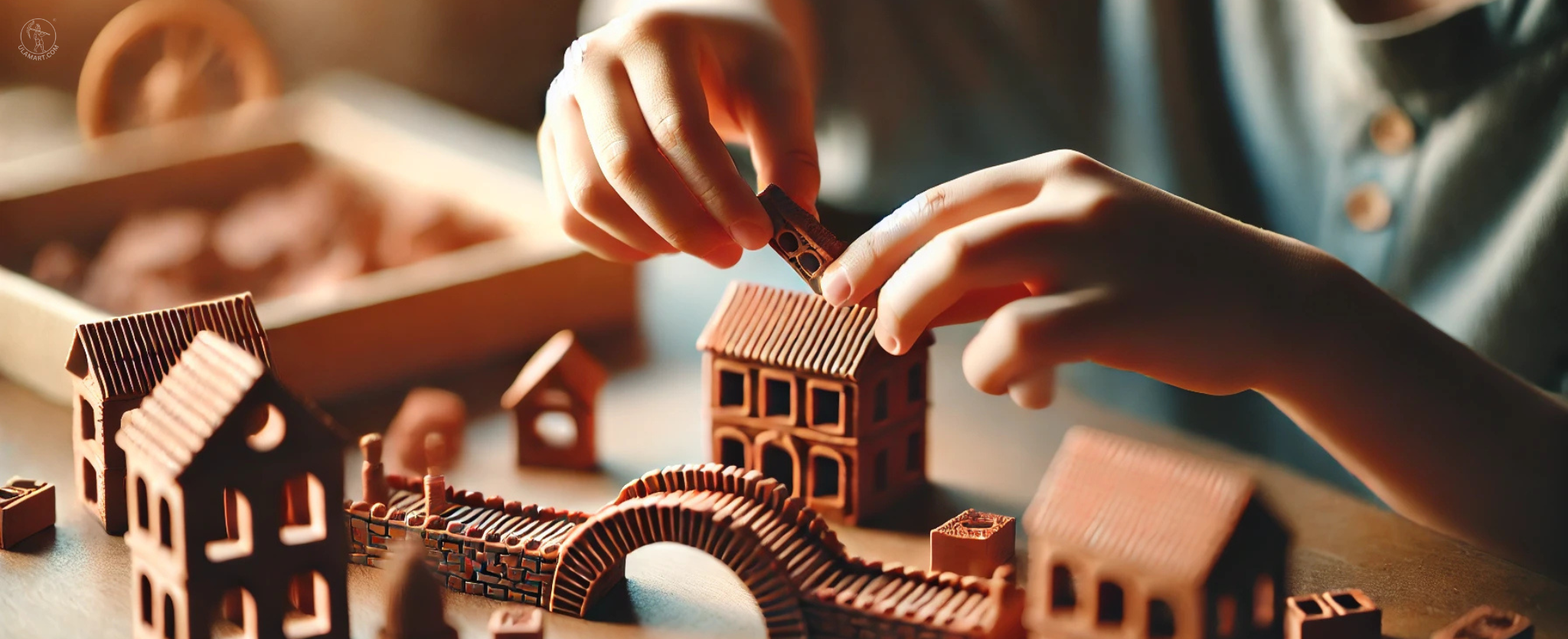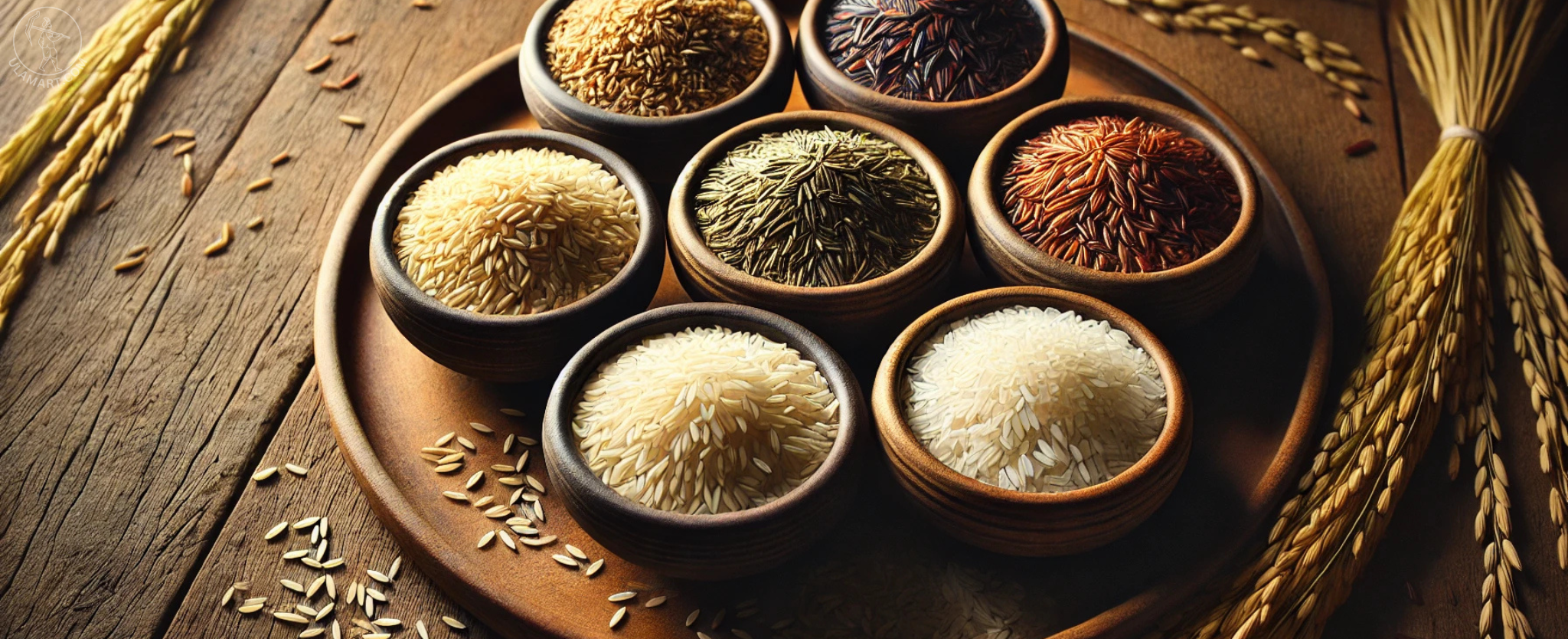Introduction
Have you ever experienced the magic of a kitchen filled with the scent of freshly made ghee (clarified butter)? For me, the aroma always brings back memories of my grandmother’s kitchen. The rich, golden ghee that simmered away filled our home with warmth and comfort but it wasn’t just the aroma; it was the mouthwatering sweets she made with it. From melt-in-your-mouth halwa to soft, rich mysore pak, every sweet she made carried the richness of Homemade A2 ghee. And it wasn’t just any ghee it was Pure A2 Cow Ghee, prepared with care, love, and centuries-old traditions.
Today, let’s embark on a journey to explore how Pure ghee from A2 milk is traditionally prepared at home. With every step, you’ll witness the transformation of milk into golden goodness, a process where patience meets tradition, and the results are truly worth savoring.
1.The Story of Pure A2 Cow Ghee
2.The Magic of Making Traditional Ghee
3.Bringing A2 Ghee into Your Daily Routine
4.The Secret Ingredient for a Healthier You
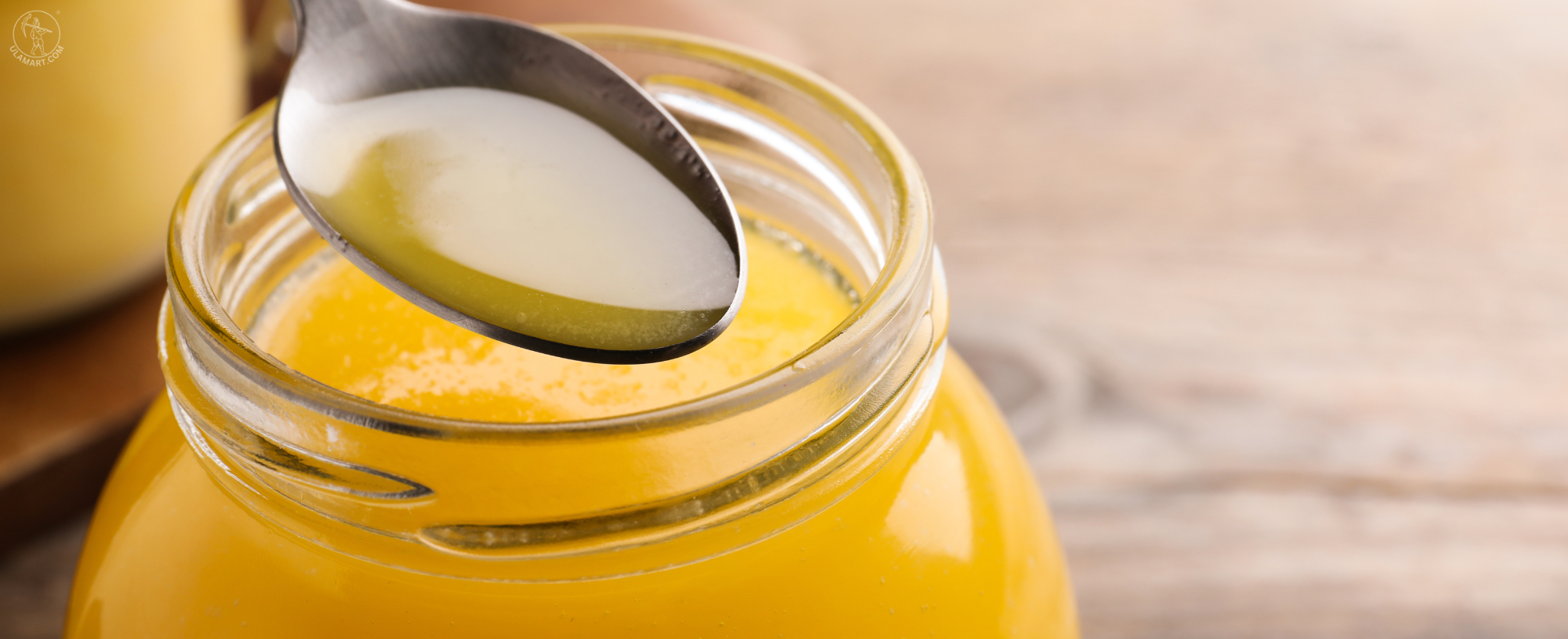
The Story of Pure A2 Cow Ghee
Before we dive into the traditional ghee recipe, let’s talk a bit about why A2 Ghee is different from the regular ghee we see in stores. You see, the best Pure A2 Cow Ghee comes from cows that produce A2 beta-casein protein, which is easier for our bodies to digest compared to A1 protein found in milk from other cows. Over time, this type of ghee has gained popularity for its digestive benefits, its ability to boost energy, and its use in Ayurvedic healing.
Growing up, I remember how we’d always seek out the best pure A2 cow ghee hand-churned from milk of indigenous cows like the Gir and Sahiwal breeds. This rich, golden substance wasn’t just a cooking medium but a healing elixir. From skin treatments to promoting digestion, Pure A2 Cow Ghee has been known to provide countless benefits for generations.
The Magic of Making Traditional Ghee
In the world of ghee making, countless methods exist, but none embody the true essence of authenticity like the traditional ghee making approach. While modern shortcuts may offer convenience, the A2 method stands as a testament to purity and nourishment. Let’s uncover the timeless A2 ghee making process behind crafting Pure A2 Cow Ghee with the same care and tradition that has been passed down through generations.
Required Items:
- 1 liter of full-fat, unpasteurized A2 cow milk (ideally from grass-fed cows)
- A heavy-bottomed pan or a traditional brass vessel.
- A wooden churner (also known as a “Bilona”)
- A wooden spoon for stirring.
Step 1: Boil the Milk
The first step of making traditional A2 ghee is sourcing the freshest A2 cow milk. You can get it directly from a local dairy. You can get it directly from a local dairy vendor. If not, you can still find high-quality A2 milk at reputable shops. Look for milk that is unpasteurized, as it retains more of its natural goodness. Start by boiling the milk in a heavy-bottomed pan. Allow it to come to a full boil, then let it cool down to room temperature.
“You know, back in the day, we were always excited to see the process of turning milk into curd and eventually into ghee was something that we cherished as a family. There was a certain patience required that made the whole process feel like a ritual.”
Step 2: Churn the Curd
Once the milk has cooled down, the next step is to turn it into curd (dahi). Add a spoonful of curd from a previous batch to the cooled milk and let it sit for 6 to 8 hours or overnight in a warm place to ferment. You’ll know it’s ready when it’s thick and creamy.
Now comes the heart of traditional ghee making! The curd needs to be churned to separate the butter from the buttermilk. Use a traditional wooden churner. If not, you can also use a hand blender or a mixie (mixer grinder) in pulse mode to gently churn the curd. As you churn, you’ll notice the curd slowly breaking down and the liquid (buttermilk) begins to separate, while small lumps of white butter start forming and coming together. Continue churning until a soft, creamy mass of butter fully separates and floats on top, leaving the buttermilk behind. Collect the butter and keep it separately.
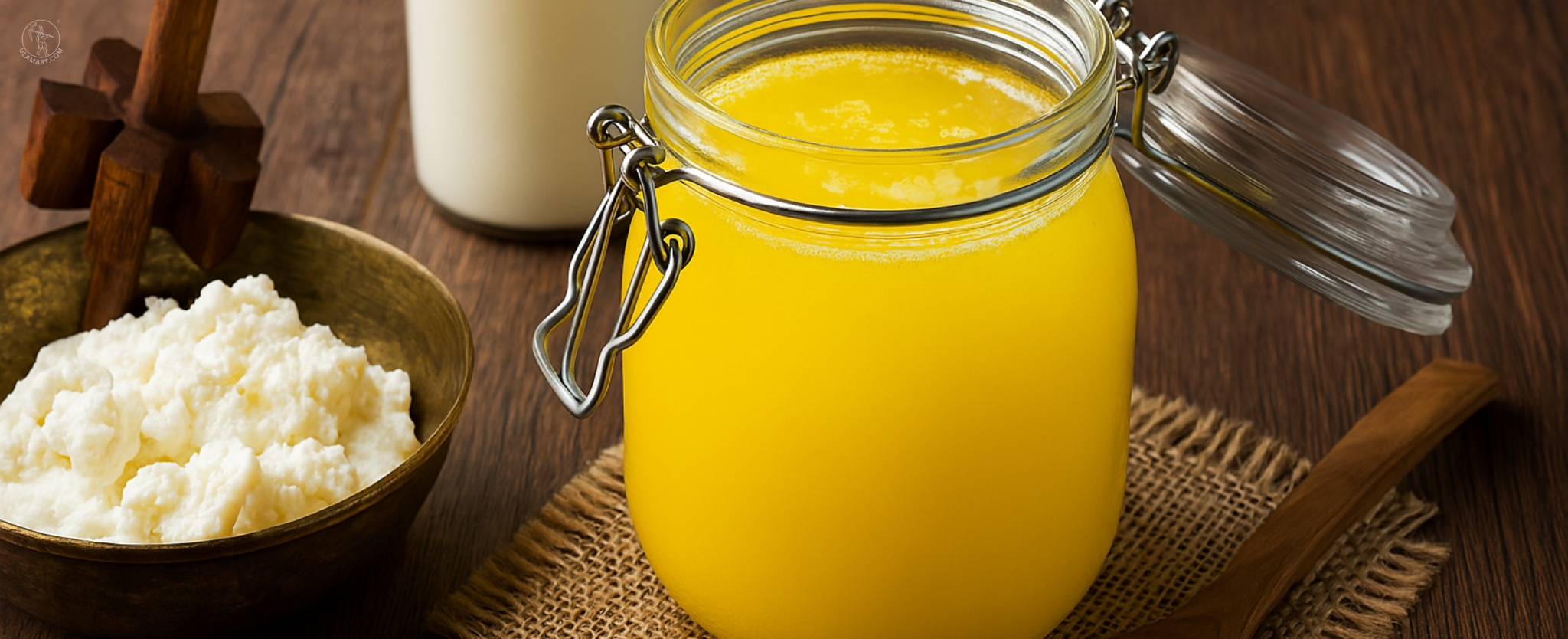
Tips about buttermilk:
- Don’t let the leftover buttermilk go to waste! Add a pinch of salt and a dash of roasted cumin powder to make a refreshing digestive drink just like it’s been enjoyed in Indian homes for generations.
- You can also use it in recipes like kadhi, dosa batter, or even as a cooling drink after a heavy meal.
“I remember my grandmother making ghee the traditional way, without using any electronic gadgets. We’d all gather around, watching in awe as the magic happened. It’s amazing how something so simple, like churning curd, could bring people together and create such warm memories.”
Step 3: Heat the Butter
Now, take the butter (the solidified part) and place it in a heavy-bottomed pan. Turn the heat to low-medium and gently heat the butter to separate the milk solids from the ghee. Keep stirring it slowly to prevent it from burning.
“As the butter starts to melt, you’ll notice a golden color emerging. At this moment, the kitchen begins to fill with the most heavenly aroma. The process is slow, but it’s worth every second. The patience you put in here pays off in the form of pure, rich ghee.”
Step 4: Let the Ghee Simmer
At this point, the butter will begin to bubble. This is when the milk solids start to settle at the bottom of the pan. Continue stirring until the milk solids turn a light brown and the ghee turns a transparent golden color. You’ll know it’s ready when the sizzling sound stops, and the ghee has a clear golden hue.
“The moment the bubbles start to subside, I can’t help but feel excited. It’s almost like we’re at the final step. The ghee is now ready to be strained!”
Step 5: Strain the Ghee
Once your ghee is done, let it cool slightly. Strain it through a fine mesh strainer or clean cloth into a clean glass jar or container. This removes any remaining milk solids and leaves you with pure, clear A2 ghee.
“I always make sure to store my pure A2 cow ghee in a glass jar to maintain its purity. It’s amazing how something so simple can hold so much power when made right.”
Bringing A2 Ghee into Your Daily Routine
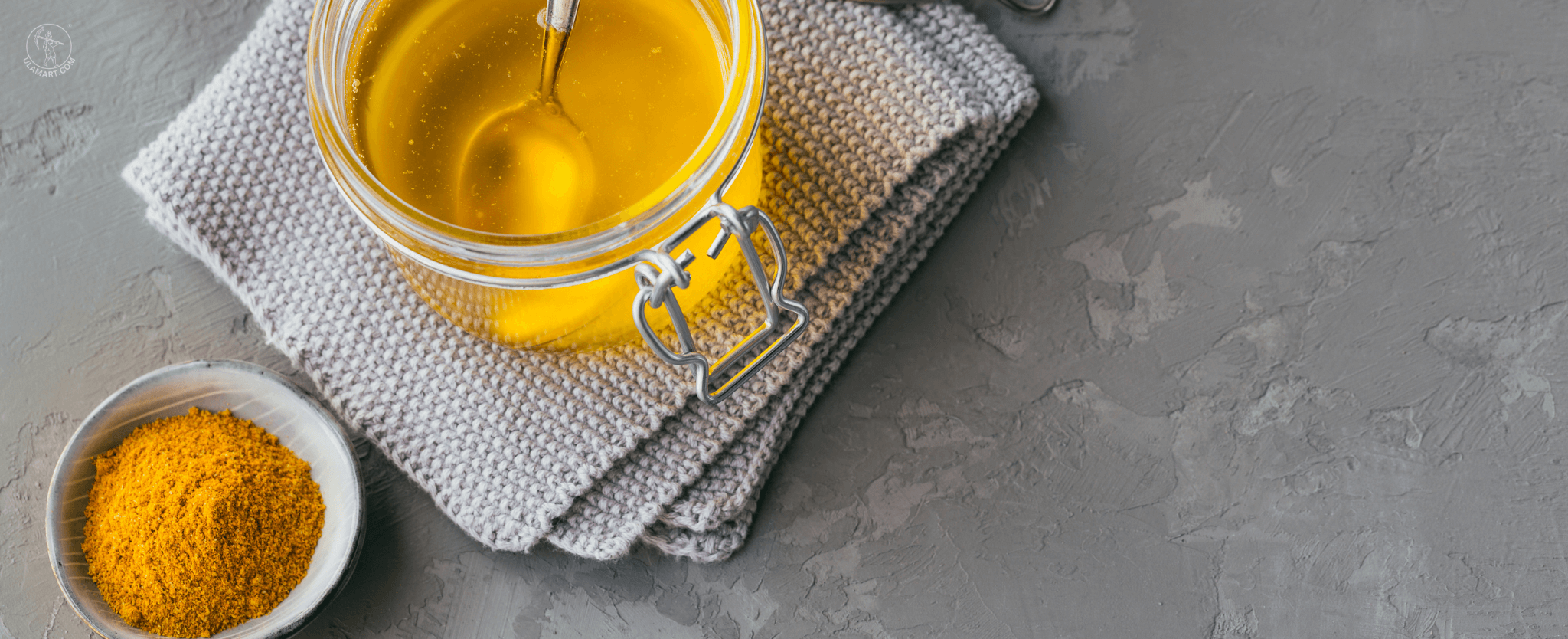
Now that you’ve made your own batch of homemade A2 Ghee, it’s time to enjoy it in delicious ways. Add a spoonful of ghee to hot rice with a sprinkle of salt for a comforting meal, mix it with idli podi for a flavorful side, or drizzle it over piping hot idlis and dosas. Use it to temper your sambar and rasam for an aromatic boost, sauté your veggies, or stir a spoonful into your morning kanji or porridge. From traditional meals to modern cooking, A2 Ghee adds a rich, wholesome touch to everyday dishes.
“I can’t think of a better way to start my day than with a spoonful of A2 ghee in my morning porridge. It gives me that extra energy boost, without the heaviness of regular oils or butter.”
The Secret Ingredient for a Healthier You
Pure A2 Cow Ghee is not just for the kitchen it’s an integral part of a holistic lifestyle. Rich in vitamins A, D, E, and K, it promotes skin health, boosts immunity, and enhances brain function. Whether you’re using it for cooking, skincare, or as part of your daily diet, A2 Ghee is a natural and nourishing choice for your body and soul.
“Just the other day, I used a little bit of A2 ghee on my skin. It’s amazing how it leaves my skin feeling soft and hydrated, without being greasy.”
Conclusion
There’s something truly magical about making traditional A2 ghee at home. It’s more than just a culinary task, it’s a journey into heritage, wellness, and heartfelt memories. Be it adding richness to your everyday meals, supporting your well-being, or unlocking centuries-old healing benefits, ghee from A2 milk is a timeless treasure every kitchen deserves.
Though you now know the process of making ghee at home, finding time in a busy schedule can still be tough. But don’t worry – at Ulamart, we’ve got you covered with our fresh, authentically homemade A2 Cow Ghee. Just order online and enjoy the goodness!
“The next time you make ghee, remember you’re not just stirring ingredients; you’re stirring stories, memories, and the warmth of tradition into something golden that feeds both heart and soul.”



